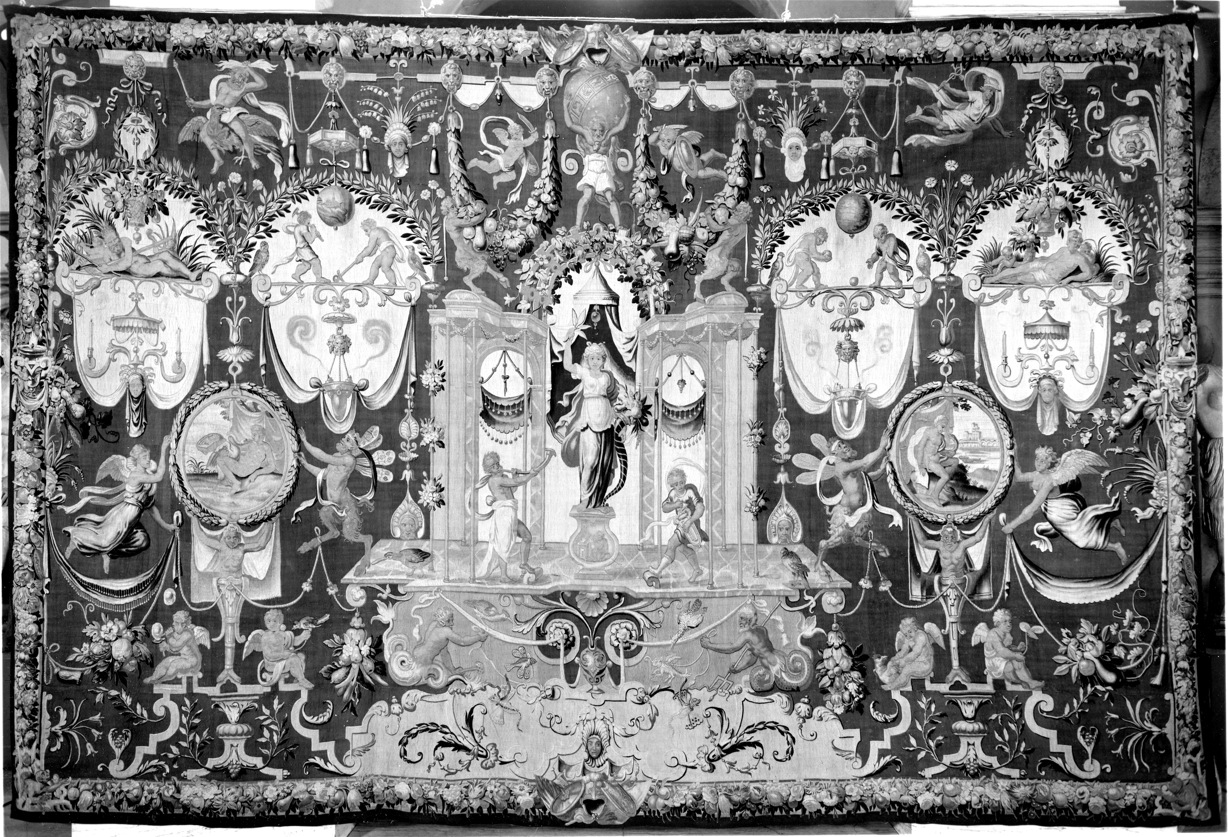Tapestry Featuring the Goddess of Abundance
(Renaissance Europe )
Featuring Ceres, goddess of Abundance, with a cornucopia held in her left hand, this tapestry was probably woven at Fontainebleau or Paris during the reign of Henry II, king of France, for a residence of his mistress Diane de Poitiers, possible for the Chateau d'Anet. The association with her is subtly signaled by the presence of her cipher, a triangle, in the left and right borders. The motif of the central staging to set off Abundance, the playful interaction of various gods and fanciful flying creatures, the combination of swags of silken cords and rinceaux of flowers and foliage are all characteristic of the decorative spirit of French palace decor of around the third quarter of the century.
Provenance
Provenance (from the French provenir, 'to come from/forth') is the chronology of the ownership, custody, or location of a historical object. Learn more about provenance at the Walters.
French & Company, New York; purchased by William Randolph Hearst [1863-1951], California and New York, 1924; William Randolf Hearst Collection Sale, Hammer Galleries and Saks Fifth, New York, ca. 1940, lot 169 no. 35. The Hearst Foundation, New York; given to Walters Art Museum, 1957.
Conservation
| Date | Description | Narrative |
|---|---|---|
| 2/17/1969 | Examination | examined for condition |
Geographies
Belgium, Antwerp (Place of Origin)
Measurements
H: 132 x W: 204 in. (335.3 x 518.2 cm)
Credit Line
Gift of The Hearst Foundation, New York, 1957
Location in Museum
Not on view
Accession Number
In libraries, galleries, museums, and archives, an accession number is a unique identifier assigned to each object in the collection.
In libraries, galleries, museums, and archives, an accession number is a unique identifier assigned to each object in the collection.
82.28






